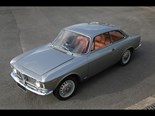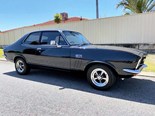Ford Thunderbird (1961-66): Buyer's guide
 Buyer's guide - 1961-66 Ford Thunderbird
Buyer's guide - 1961-66 Ford Thunderbird

 Buyer's guide - 1961-66 Ford Thunderbird
Buyer's guide - 1961-66 Ford Thunderbird

 Buyer's guide - 1961-66 Ford Thunderbird
Buyer's guide - 1961-66 Ford Thunderbird

 Buyer's guide - 1961-66 Ford Thunderbird
Buyer's guide - 1961-66 Ford Thunderbird

 Buyer's guide - 1961-66 Ford Thunderbird
Buyer's guide - 1961-66 Ford Thunderbird

 Buyer's guide - 1961-66 Ford Thunderbird
Buyer's guide - 1961-66 Ford Thunderbird

 Buyer's guide - 1961-66 Ford Thunderbird
Buyer's guide - 1961-66 Ford Thunderbird

 Buyer's guide - 1961-66 Ford Thunderbird
Buyer's guide - 1961-66 Ford Thunderbird


|
|
Buyer's guide - 1961-66 Ford Thunderbird
|

|
|
Buyer's guide - 1961-66 Ford Thunderbird
|

|
|
Buyer's guide - 1961-66 Ford Thunderbird
|

|
|
Buyer's guide - 1961-66 Ford Thunderbird
|

|
|
Buyer's guide - 1961-66 Ford Thunderbird
|

|
|
Buyer's guide - 1961-66 Ford Thunderbird
|

|
|
Buyer's guide - 1961-66 Ford Thunderbird
|

|
|
Buyer's guide - 1961-66 Ford Thunderbird
|
Stylish and reasonably easy to live with, the Thunderbird has a lot to offer

|
|
Buyer's guide - 1961-66 Ford Thunderbird
|
Ford Thunderbird (1961-66)
Want a classic car you’ll be noticed in? Then it’s hard to go past this car
Had it not been for a mythical creature revered by North American Indians and a stylist by the name of Aiden Giberson, Ford’s most important model of the 1950s could have shared its name with a three-piece suit.
When Ford management suggested the two-seat convertible under development might be called the Savile, Giberson and fellow designers erupted in protest.
With the reward of a $250 suit – pretty fancy rags in 1954 – the challenge was issued to suggest a more appropriate name.
It didn’t take Giberson long to recall the legend of a huge, winged creature, whose flapping wings brought storms and prosperity to the land. He got the suit and in October 1954, the world saw its first Ford Thunderbird.
Starting life as a two-seat version of the car Australians knew as a Customline was not the best pedigree for a model intended to carry Ford’s challenge to General Motors’ purpose-built Corvette.
During three years of production, sales of the retrospectively nicknamed ‘Baby Bird’ barely exceeded 50,000 before being replaced by a totally new four-seat coupe and convertible.
Forsaking the traditional separate body/chassis configuration that had dominated US automotive design for decades, the 1958 Thunderbird introduced unitary (integrated body/chassis) construction, a 5.9-litre V8 in place of the two-seat car’s 5.2-litre, 280mm of additional wheelbase and coil spring suspension.
From 1959, the rear coils were replaced by leaf springs and a 430 cubic inch (7.1-litre) Lincoln V8 became optional.
The hefty ‘Squarebird’ was replaced in 1961 by a third generation of T-Bird; this car’s cigar-shape profile and massive, circular tail-lamps was an exploitation of America’s obsession with missiles and jet propulsion.
Helping bolster the T-Bird’s appeal to younger buyers was product placement on a grand scale; a red convertible for Elvis Presley in Follow That Dream and the specially-equipped Landau supplied a few years later for Dean Martin’s Matt Helm character in Murderers’ Row just two examples of the Thunderbird’s 1960s film and TV credits.
Standard equipment for 1961 was a new 390ci (6.4-litre) engine with 224kW in basic tune and 280kW from the high compression Special V8.
Manual transmission disappeared in favour of compulsory three-speed Cruisomatic.
Power steering and servo-assisted brakes were standard while popular options included a ‘swingaway’ steering wheel that allowed easier access for the corpulent, air-conditioning and electric windows.
For 1962 the T-Bird range doubled in size with the inclusion of a luxurious Landau coupe and quasi two-seat Sports Roadster. In effect, the Roadster was a four-seat convertible but a detachable fibreglass tonneau cover with integrated headrests concealed the rear seats.
Wire spoke wheels were standard, with triple-carburettor Tripower induction a $240 option.
Thunderbirds were never a cheap ticket to Ford ownership and, by 1963, the price of a basic Hardtop had reached $US4445 – almost $2000 dearer than a two-door Galaxie – yet annual
T-Bird sales remained above 60,000.
A 1964 restyle brought a more conservative but equally distinctive T-Bird, with inset headlamps separated by a chrome-framed grille, pronounced scalloping to the side panels and huge rectangular tail lamps.
For 1966, these would be replaced by a full-width illuminating panel that incorporated sequential indicators and a centrally mounted reversing lamp.
Roadster production ended in 1963 but convertible sales during the following year soared past 9000 and contributed to a T-Bird build total for 1964 of 92,465 units.
Safety – and the precedent set by GM’s Corvette Stingray – saw Ford in 1965 take the revolutionary step of fitting front disc brakes as standard equipment on all Thunderbirds.
Putting some extra thunder under a ’Bird that by 1966 weighed up to 2085kg was an optional 7.0-litre V8 with 33kW more power than the standard 390.
Sales of the Landau version, with its distinctive ‘roof irons’ made substantial gains and during 1966 the elegant coupe with its extended C-pillar accounted for half of the 69,000 Thunderbirds sold.
But 1967 saw elegance supplanted by obesity – the ‘Big Bird’ series deserting the T-Bird’s ‘personal car’ concept and conferring instant classic status on earlier models.
ON THE ROAD
Those seeking glamour in their motoring experience will appreciate the environment of a Thunderbird cabin. The individual seats are broad and sumptuous – although too low in the backrest for some – and usually electrically adjustable. Behind the huge, deep-dish steering wheel sits a comprehensive, chrome-laced instrument panel. Most locally available cars will be fitted with air-conditioning and electric windows.
Despite its diameter, the wheel requires just three turns from lock-to-lock to operate what should be one of the most responsive power steering systems fitted to a 1960s American car.
However, some potential T-Bird owners, find the car of their dreams steers like a demented shopping trolley.
Barry Haley – a specialist in T-Bird steering conversions, of Fame Enterprises at Keilor in Victoria (Ph: 03 9331 6867) – has some words of advice.
"Early right-hand drive conversions involved fitting an additional idler arm to the right-hand side of the chassis, dramatically increasing the turning circle (it should be 12.4m), putting extra stress on all of the suspension components and even causing the chassis to crack," Haley advised.
"Add the deterioration that’s natural over 40 years or so and you can find cars that really need a major front-end rebuild before they can be expected to steer and handle properly."
Visibility from the low-set driving position is reasonable, however fitting a passenger-side mirror to eliminate the rear pillar blind-spot is advisable.
Performance from a standing start is muted by two and a bit tonnes of inertia but on-the-move acceleration is impressive. Tested in 1961 by UK-based Autocar magazine, a 6.4-litre Hardtop accelerated from 50-80km/h in 4.4sec and
100-130km/h in 8.8. Fuel consumption was equally spectacular with the 390 V8 gobbling almost 21 litres every 100km.
The majority of local ’60s T-Birds have power assisted drum brakes that are reasonably efficient but need to be in top condition if the car will be used regularly. Those built after 1964 come standard with Kelsey-Hayes front disc brakes.
BUYER’S CHECKLIST
Body
The integrated body/chassis construction means significant rust will be expensive to repair. Check the floors, sills, rear quarter panels and the convertible top ‘package tray’. Cars with vinyl roof covering are susceptible to turret rust. Missing or damaged chrome is expensive to replace. Convertible tops that operate slowly or not at all could be low on oil (transmission fluid in later cars, brake fluid in pre-1963s) or be suffering a variety of hydraulic or electrical woes. Replacing the roof activating relays will alone cost around $800.
Engine
Ford big block engines are heavy, lazy and very durable. Recent imports that haven’t been driven for some time may produce exhaust smoke due to stuck piston rings – a problem that can often be cured by some engine flush and new oil. Noisy hydraulic valve lifters are common and not a serious issue unless the engine is misfiring. Overheating is common and most easily cured by installing a heavy duty radiator and thermatic fan.
Transmission
Ford auto ‘boxes are among the most durable of the world’s transmissions. Dirty oil, slow or slurred changes suggest that a rebuild is overdue but rebuilt C6 ‘boxes are available locally for less than $1000 exchange. Driveline vibration is commonly associated with tired or broken engine mounts.
Suspension & Brakes
Thunderbird suspension is straightforward and replacement parts are available. Stiff, notchy or sloppy steering – especially in RHD cars – demands expert investigation. Replacement brake drums and other parts are available, however pre-’64 brake boosters are difficult to locate and reconditioned units need to be sourced from the USA.
Interior & Electrical
Clues to a poor quality conversion include instruments that tilt downward and a low-set steering wheel. Wear to the nylon bush that locates the wheel to the steering column is a common fault and easily rectified. Reproduction interior trim is available from US-based suppliers; full seat retrim kits quoted at $US600, with original pattern carpet sets $US180. Specialised parts are more expensive and replacing the three-piece tail lamp lense on a ‘66 will cost, with freight and import duty, around $A500.
SPECIFICATIONS
Ford Thunderbird, 1961-66
Body: steel integrated body/chassis construction, two-door hardtop or convertible
Engine: 6.4 or 7.0-litre V8 with overhead valves and single, four-barrel carburettor
Power & Torque: 224kW @ 4600rpm, 516Nm @ 2800rpm (6.4-litre)
Performance: 0-96km/h 9.3sec, 0-400m 16.8sec (1961 Hardtop)
Transmission: three-speed automatic
Suspension: Front: independent with wishbones, coil springs, hydraulic shock absorbers and anti-roll bar Rear: live axle with semi-elliptic springs and hydraulic shock absorbers
Brakes: drum/drum (1961-64), disc/drum (1965-66) power assisted
Wheels/Tyres: 14 x 6 steel, 8.00 x 14 cross ply
Price range: $10,000 – $60,000 – excludes Roadster
Contact: Thunderbird Owner’s Club of Australia, http://www.toca.net.au
Unique Cars magazine Value Guides
Sell your car for free right here
Get your monthly fix of news, reviews and stories on the greatest cars and minds in the automotive world.
Subscribe

.jpg)







.jpg)



